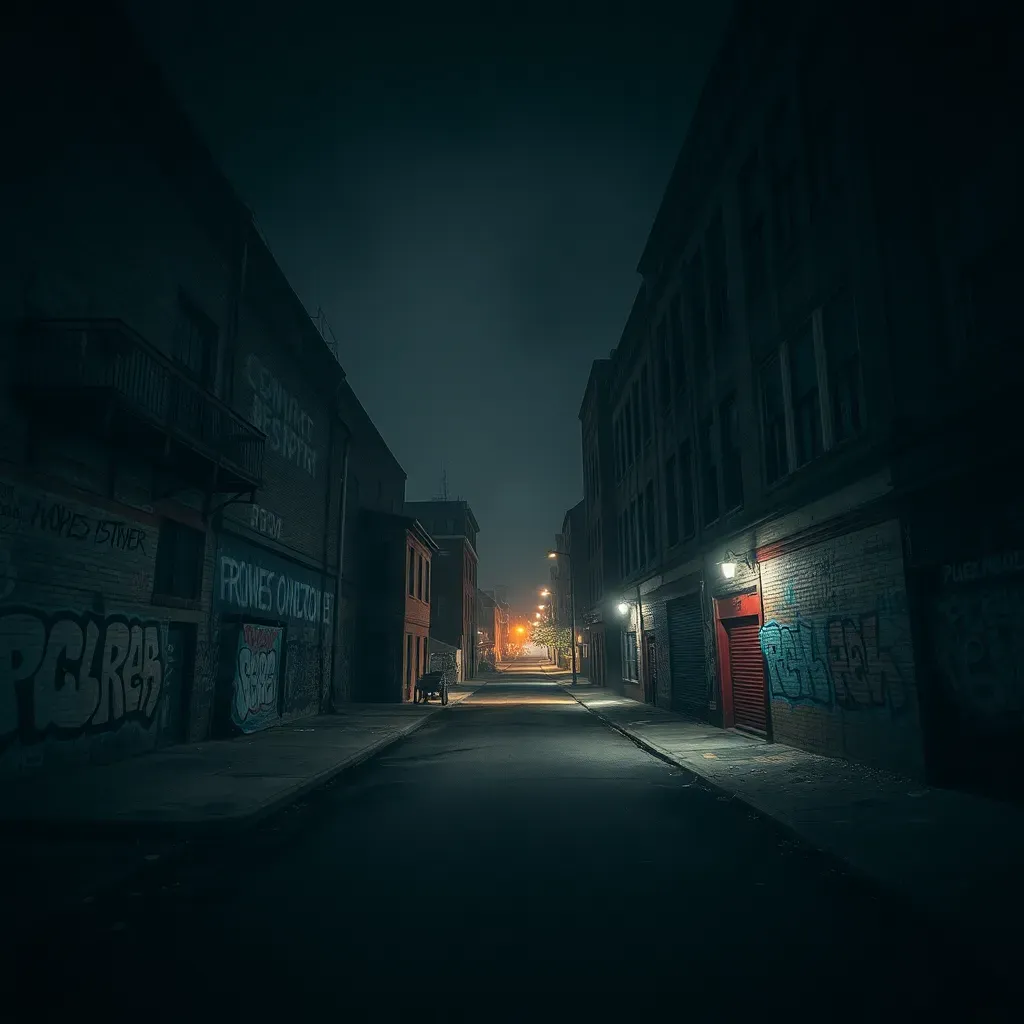Most dangerous neighborhoods in St. Louis you won’t believe exist
- Why St. Louis Crime Matters to You
- Is St. Louis Really One of the Most Dangerous Cities in the US?
- What Makes a Neighborhood Dangerous? Understanding Crime in St. Louis
- The 10 Most Dangerous Neighborhoods in St. Louis You Should Know About
- Neighborhood Profiles: What Makes These Areas Sketchy, Rough, or Risky?
- How Crime Affects Daily Life in These Neighborhoods
- Safety Tips and What You Can Do If You Live or Visit These Areas
- Comparing St. Louis’ Dangerous Neighborhoods to Other Risky Towns in the US
- Opinions From Locals and Experts: What People Really Say About St. Louis’ Crime
- What You Need to Remember About St. Louis’ Most Dangerous Neighborhoods
- Sources and Further Reading
Why St. Louis Crime Matters to You
St. Louis, a city nestled along the mighty Mississippi River, is home to over 300,000 people. It often pops up in conversations about crime, especially when folks compare big cities across the US. But what does it really mean when we talk about the most dangerous neighborhoods in St. Louis? It’s not just about scary headlines or numbers on a page. Understanding these neighborhoods helps everyone—from locals to visitors and those thinking about moving—make smarter, safer choices.
When we say “most dangerous,” we’re looking at areas where residents and visitors might face higher chances of encountering crime. This includes everything from violent crime like assaults and robberies to property crime such as car thefts or break-ins. But it’s important to remember: not all of St. Louis is sketchy or rough-around-the-edges. Many neighborhoods are family-friendly and welcoming. This article digs into the gritty parts, the stories behind the stats, and what you can do to stay safe.
Is St. Louis Really One of the Most Dangerous Cities in the US?
St. Louis often ranks high on lists comparing crime rates among big cities like Chicago, Los Angeles, and New York. But these rankings can be misleading if you don’t understand the difference between the city and the county. The city of St. Louis is smaller but has a concentrated number of crime incidents, which pushes its rates up. Meanwhile, St. Louis County, which surrounds the city, tends to be much safer.
The types of crime most common here include violent crime such as assaults and homicides, as well as property crime like vehicle thefts and burglaries. Gun violence is a serious concern in some neighborhoods, contributing to the city’s reputation.
Geography plays a big role too. The city’s boundaries are drawn in a way that concentrates certain populations and economic challenges, which affects crime perception. Areas with higher poverty and unemployment often see more dodgy activity, but it’s not the whole story. Urban decay, abandoned buildings, and limited police presence in some spots also contribute to the challenges.
What Makes a Neighborhood Dangerous? Understanding Crime in St. Louis
To understand why some neighborhoods are seen as risky or shady, we need to break down some key terms. Violent crime includes offenses like murder, assault, and robbery. Property crime covers theft, burglary, and vehicle theft. The crime rate is usually measured per 1,000 or 100,000 residents, showing how often crimes happen in an area. Odds of being a victim help people grasp their personal risk.
Police data gives us official numbers, but community reports and resident experiences add important context. For example, a street with poor lighting and few signs of police presence might feel unsafe even if crime stats are moderate. Alleys, corners, and blocks with abandoned homes or vacant lots often become hotspots for dodgy activity.
Businesses, parks, schools, bars, and restaurants also shape neighborhood safety. Busy, well-lit commercial areas tend to be safer, while isolated spots can be riskier. Sometimes, a neighborhood’s reputation as rough or dicey comes from a mix of real incidents and local stories passed down over time.
The 10 Most Dangerous Neighborhoods in St. Louis You Should Know About
Wells-Goodfellow
Located in North St. Louis, Wells-Goodfellow is often cited as one of the crime-heavy areas in the city. With a population around 10,000, it faces challenges like high violent crime rates and property crimes. Residents report incidents of assaults and robberies, especially after dark. The neighborhood struggles with poverty and unemployment, and many homes and businesses show signs of urban decay. Community groups are working hard to improve safety, focusing on better lighting and neighborhood watch programs.
Gravois Park
Gravois Park sits south of downtown and has a diverse population. Crime stats show elevated rates of both violent crime and property crime compared to city averages. The area includes several parks and schools, but some blocks have been flagged for shady activity, especially near poorly lit alleys and corners. Local efforts aim to boost police presence and community engagement.
JeffVanderLou
This neighborhood, often called JeffVanderLou or “The Ville,” has a rich history but faces ongoing safety concerns. It has one of the highest violent crime rates in St. Louis, with frequent reports of assaults and gun-related incidents. The population is around 7,000, with many residents living below the poverty line. Vacant lots and abandoned homes contribute to the rough reputation. Still, community leaders are pushing for revitalization projects.
Central West End
Central West End is a mixed bag. Parts of it are vibrant and popular with tourists, but some blocks have seen a rise in property crime and occasional violent incidents. The neighborhood has a higher median income than others on this list, but dodgy spots exist near certain bars and restaurants. Police recommend caution at night, especially around less trafficked streets.
Dutchtown
Dutchtown, in South St. Louis, has a growing immigrant population but also faces challenges with crime. Violent and property crimes are above the city average, with some areas marked by abandoned homes and low lighting. Community groups focus on improving safety through neighborhood cleanups and youth programs.
Tower Grove South
Tower Grove South is known for its parks and cultural diversity but has some risky blocks with reports of assaults and thefts. The neighborhood benefits from active community policing and local events aimed at fostering trust and safety.
Bevo Mill
Bevo Mill has a mix of residential and commercial zones. Crime rates here are moderate but certain streets and alleys have seen incidents of vehicle theft and break-ins. Residents advise staying alert, especially after dark.
Carondelet
Located in the southern part of the city, Carondelet has pockets of shady activity. Property crime is a concern, with reports of burglaries and car thefts. Community efforts include neighborhood watches and improved street lighting.
Downtown St. Louis
Downtown is bustling with businesses, bars, and restaurants. While generally safe during the day, some dodgy corners and alleys see incidents of theft and assaults at night. Police presence is strong, but visitors are advised to stay in well-lit, busy areas.
Downtown West
Adjacent to Downtown, Downtown West has a mix of residential and commercial spaces. Crime rates are higher than average, with reports of assaults and property crimes. Efforts to increase lights and surveillance cameras are underway.
Neighborhood Profiles: What Makes These Areas Sketchy, Rough, or Risky?
Each neighborhood’s risk level often comes down to specific streets, alleys, and corners that locals tend to avoid. Poor lighting and lack of visible police patrols create opportunities for crime. Abandoned homes and vacant lots become magnets for illegal activity, fueling the rough reputation.
Signs of urban decay—like boarded-up windows and graffiti—can make residents feel unsafe. However, many neighborhoods have active community groups working to improve conditions. These groups organize cleanups, advocate for better street lights, and partner with local police to boost patrols.
Crime often clusters in blocks rather than spreading evenly. Some corners might be hotspots for drug activity or theft, while nearby blocks remain relatively calm. Understanding these micro-level details helps residents navigate their neighborhoods more safely.
How Crime Affects Daily Life in These Neighborhoods
Living in or near these neighborhoods means residents often adjust their routines. Safety concerns might lead to avoiding certain streets after dark or limiting visits to local parks and shops. Community trust can be fragile, and neighbors sometimes band together to watch out for each other.
Local businesses, bars, and restaurants may see fewer customers during risky hours, impacting the economy. Schools in these areas often implement extra safety measures, and parents remain vigilant about their children’s routes and activities.
Transportation can be tricky too. Car thefts and break-ins are common in some zones, so residents take precautions like parking in well-lit areas or using alarms. Public transit users might avoid certain stops at night.
Stories from Reddit and local forums reveal a mix of frustration and hope. Some residents share tips on avoiding dodgy spots, while others highlight community efforts making a difference.
Crime Rates Comparison: St. Louis & Other US Cities
St. Louis (City)
Population 300,000
Violent Crime Rate 1,900 per 100k
Property Crime Rate 4,200 per 100k
Community policing & neighborhood watches
Detroit
Population 670,000
Violent Crime Rate 1,800 per 100k
Property Crime Rate 4,500 per 100k
Vacant lot cleanups & youth programs
Baltimore
Population 585,000
Violent Crime Rate 1,700 per 100k
Property Crime Rate 3,900 per 100k
Increased patrols & surveillance cameras
East St. Louis
Population 26,000
Violent Crime Rate 2,200 per 100k
Property Crime Rate 5,000 per 100k
Community engagement & police reforms
Safety Tips and What You Can Do If You Live or Visit These Areas
Staying safe starts with awareness. Here are some practical tips:
- Stay in well-lit areas and avoid poorly lit alleys or corners at night.
- Be mindful of your surroundings, especially in risky neighborhoods.
- Use crime maps to understand which blocks have higher incident rates.
- Get involved in community crime prevention programs or neighborhood watches.
- Support local efforts to improve lighting and surveillance.
- Keep your homes and vehicles secured with alarms and locks.
- Report suspicious activity to police promptly.
Understanding how to read a crime map can help you spot patterns and avoid trouble zones. Technology like security cameras and better lights plays a big role in reducing crime, but community cooperation is key.

Comparing St. Louis’ Dangerous Neighborhoods to Other Risky Towns in the US
St. Louis isn’t alone in facing these challenges. Cities like Detroit, Baltimore, and East St. Louis also have crime-heavy areas with similar struggles.
| City | Population | Violent Crime Rate (per 100k) | Property Crime Rate (per 100k) | Notable Safety Initiatives |
|---|---|---|---|---|
| St. Louis (City) | 300,000 | 1,900 | 4,200 | Community policing, neighborhood watches |
| Detroit | 670,000 | 1,800 | 4,500 | Vacant lot cleanups, youth programs |
| Baltimore | 585,000 | 1,700 | 3,900 | Increased patrols, surveillance cameras |
| East St. Louis | 26,000 | 2,200 | 5,000 | Community engagement, police reforms |
Lessons from these cities show that combining police efforts with community involvement and urban renewal can help reduce crime over time.
Opinions From Locals and Experts: What People Really Say About St. Louis’ Crime
“I’ve lived in Wells-Goodfellow for years, and while there are some rough spots, the community is strong. We watch out for each other and work with local groups to make things better.” – Local resident, Reddit source
“Crime stats don’t tell the whole story. Some neighborhoods get a bad rap unfairly, but there are real efforts to improve safety and quality of life.” – Community leader, local forum source
“Downtown St. Louis is vibrant but visitors should stay aware, especially at night. Stick to busy streets and avoid dark alleys.” – Police officer interview, local news source
What You Need to Remember About St. Louis’ Most Dangerous Neighborhoods
Crime in St. Louis is concentrated in certain neighborhoods with higher rates of violent crime and property crime. Areas like Wells-Goodfellow, JeffVanderLou, and Gravois Park have challenges linked to poverty, urban decay, and limited police presence. However, many parts of the city remain safe and welcoming.
Understanding the nuances behind the numbers helps residents and visitors make informed decisions. Community efforts, improved lighting, and active policing are making a difference. Staying aware, avoiding risky spots, and supporting local safety programs can help everyone enjoy St. Louis more safely.
Sources and Further Reading
- PASS Security St. Louis Crime Map Report
- Property Club: Most Dangerous Neighborhoods in St. Louis
- Reddit: Dangerous Neighbourhood to Avoid
- GIS Geography: St. Louis Crime Map
- CrimeGrade: Safest and Most Dangerous Places in St. Louis
- The People's Counsel: St. Louis Homicide Map
- NewsBreak: 10 Dangerous Neighborhoods to Avoid in St. Louis
What do you think about the safety situation in St. Louis? Have you had experiences in any of these neighborhoods? How would you like to see communities and authorities work together to improve safety? Share your thoughts, questions, or stories in the comments below!
 Is it safe to walk in St. Louis at night? The truth you won’t believe
Is it safe to walk in St. Louis at night? The truth you won’t believe Is Kansas City dangerous? Shocking crime facts you won’t believe
Is Kansas City dangerous? Shocking crime facts you won’t believeSi quieres conocer otros artículos parecidos a Most dangerous neighborhoods in St. Louis you won’t believe exist puedes visitar la categoría Missouri.

Leave a Reply